If you want to ride a PCC streetcar in regular service, you can still go to Boston, Philadelphia, or San Francisco, but since 2000, you can also ride them in Kenosha, Wisconsin, on a loop track of slightly less than two miles. On Saturday, March 16th, Kenosha Transit put 1948 vintage ex-SEPTA PCC 2185 into service, representing Philadelphia.
The sun shines on ex-SEPTA PCC 2185, now in service in Kenosha.
This makes a fleet of 8 PCCs in all, with one being store inoperable. The original five cars, all ex-Toronto circa 1951, and representing different cities, were lined up outside the Joseph McCarthy Transit Center for photos. Kenosha’s streetcars retain the numbering from their prior homes.
Cars 2185 and 4617 were acquired from the East Troy Electric Railroad. East Troy decided to stick with double-ended cars, rather than construct expensive turning loops at both ends of their line.
The people of Kenosha are very friendly, and the line was operating on a 15-minute headway the day I was there. They are even railfan-friendly. There were several photographers along the trolley loop, and our operator was happy to oblige with a photo stop now and then, especially when the sun peeked out from behind the clouds for about a minute. The PCC rolled along at a leisurely pace of about 10-12 mph for the most part.
Kenosha streetcar mechanic Bradley Preston gave us a grand tour of the shops, including a demonstration of how a PCC’s traction motor works:
Bradley Preston Explains How PCC Streetcar Resistors Work
PCC 2185 rounds a bend near the Kenosha METRA station on March 16, 2013:
PCC 2185
A fine time was had by all. It was a kick to ride car 2185, and it’s entirely possible I already rode the car before on the streets of Philadelphia, 25 years ago or more. Even more interesting, this car had its trucks exchanged and now rides on former Chicago PCC trucks. Car 4617, also acquired from East Troy, also runs and together, the two cars are a nice addition to a well-maintained fleet.
It appears Kenosha’s system is going to expand, as we were told they have now secured funding for an additional 22 blocks of trackage in a north-south loop line. Construction may begin in 2014. As the word “streetcar” slowly creeps into the lexicon of American cities once again, it looks to have a very bright future in Kenosha.
-David Sadowski
(All photos and videos were taken by the Author on March 16, 2013 unless otherwise noted.)

The five original Kenosha PCCs, all ex-Toronto, lined up outside the carbarn (4606-4609-4616-4615-4610).

4606, the ersatz Chicago car (Chicago’s PCCs were all longer than standard dimensions).
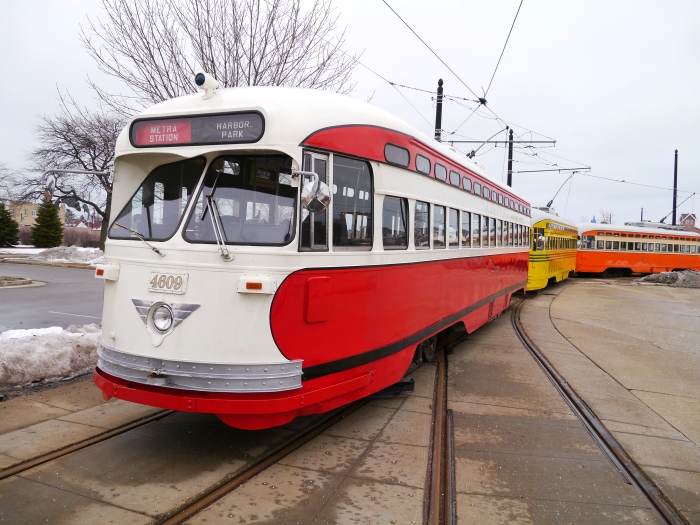
4609 represents Pittsburgh.

The Cincinnati tribute car.
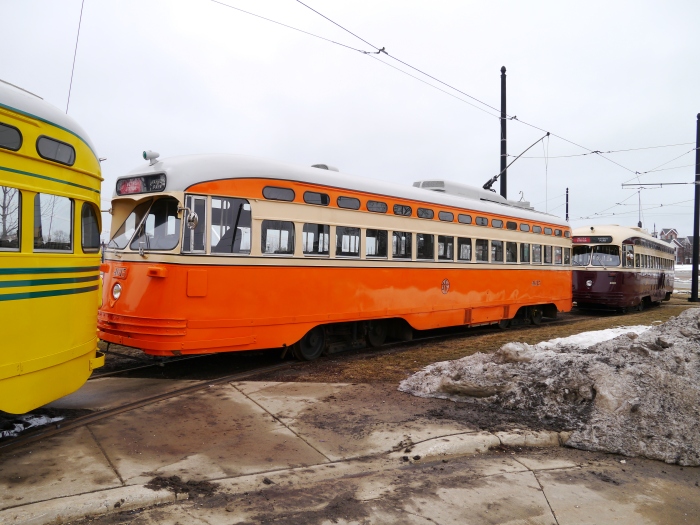
4615 represents Johnstown, PA, the smallest city in the US to have PCCs.
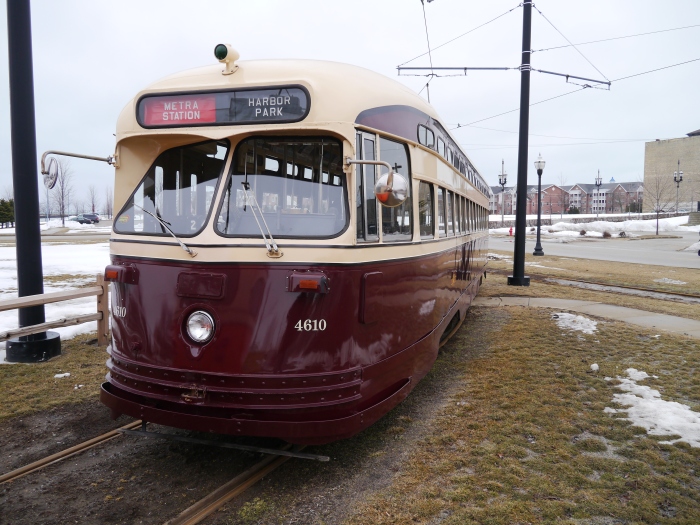
4610 represents Toronto.
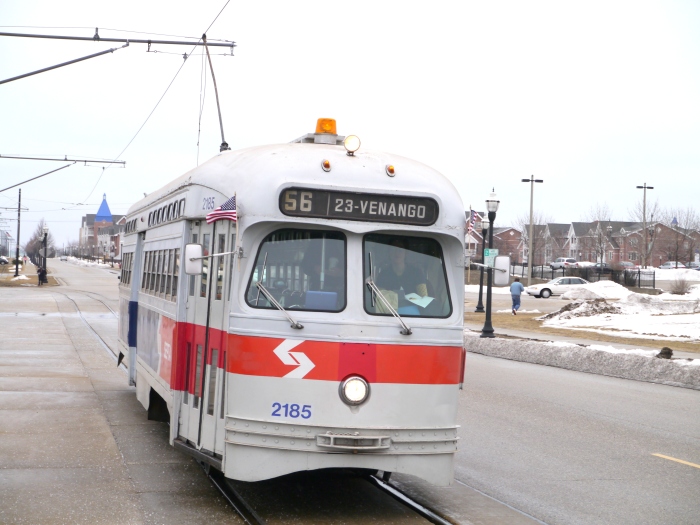
2185 in action, still signed for the SEPTA #56 streetcar line (Erie-Torresdale).
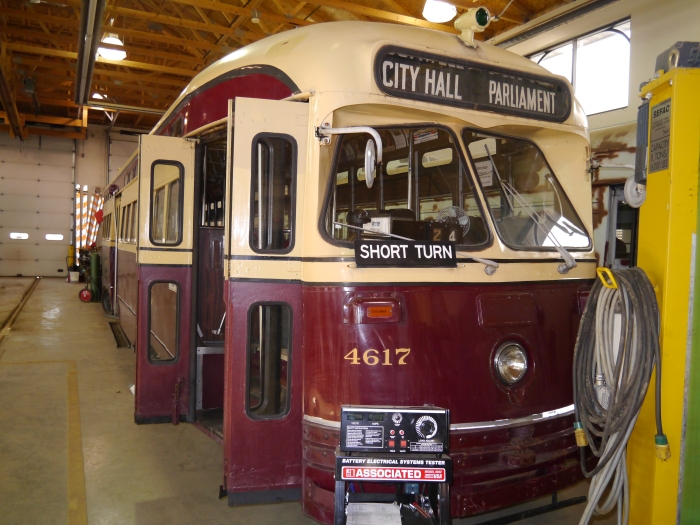
Most of Kenosha’s cars are ex-Toronto, but only 4610 and 4617 are in TTC colors.
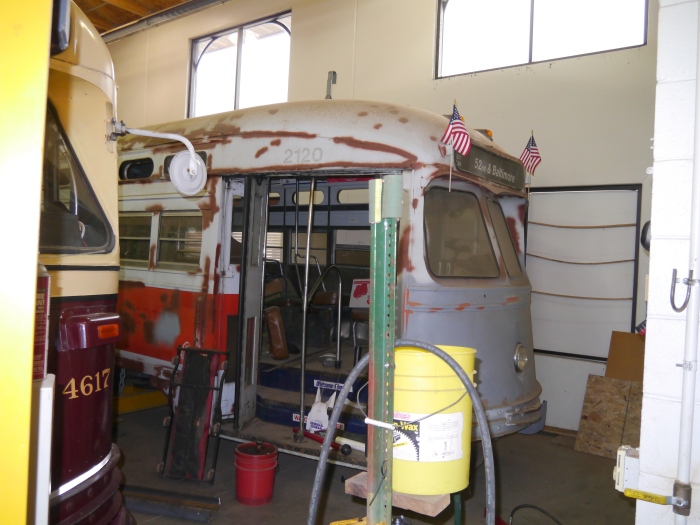
Kenosha also has ex-SEPTA 2120, which is not in operable condition.
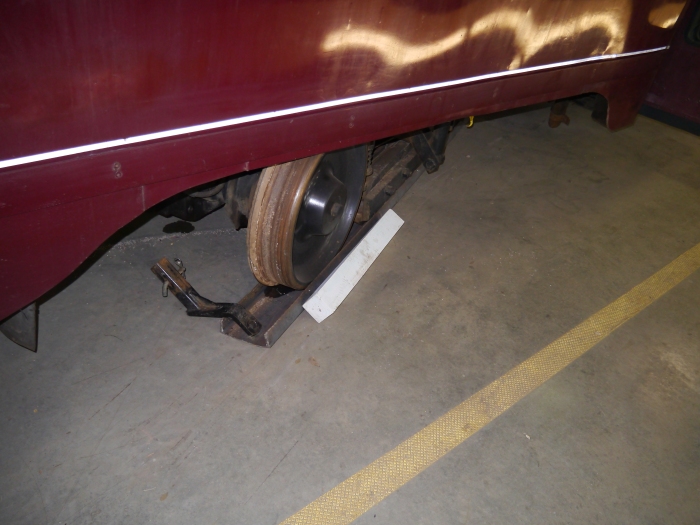
Interestingly, a couple of PCCs in the shop are not on rails. The metal under the wheels is there simply to protect the floor. Cars can be moved on and off the tracks in just a few hours by one man.
We tour the shops.
Signs that will be increasingly needed in Kenosha’s future.
The carbarn fits 8 PCCs comfortably.
4616 above the pit.
Stylish Pittsburgh Railways logo on 4609.
4606 looking very shiny in the carbarn.
4615 and 4616 at rest.
4610 in the carbarn.
As you can see, the interior of 2185 is in great shape.
2185 near the Lake Michigan shoreline.
2185 near the Lake Michigan shoreline.
2185 in action.
ex-SEPTA 2185 rounding a curve near the Kenosha METRA station.
It is still possible to find an AMC Pacer in the city where they were built.
The former North Shore Line Station in Kenosha is now the Cesar E. Chavez Learning Station.
SEPTA PCC 2168 in Philadelphia service on the #47 line in 1973. (Author’s collection)